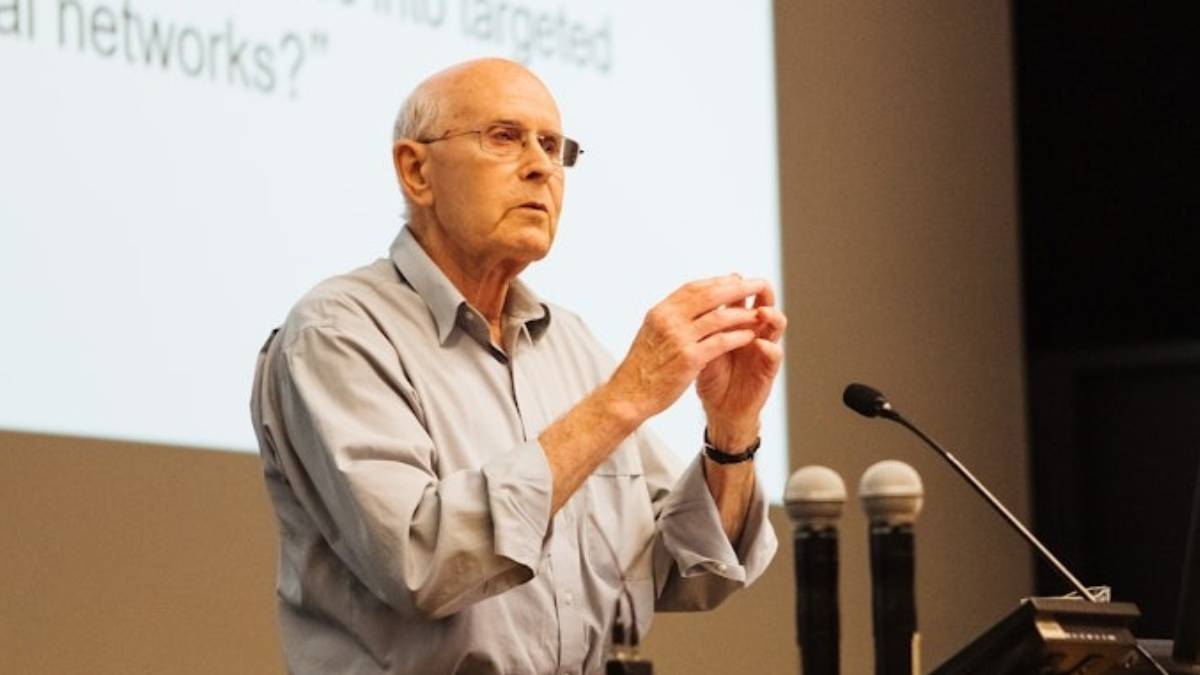Richard Robson and the Classroom Idea That Changed Chemistry
Richard Robson, the 88-year-old professor from the University of Melbourne, has been awarded the 2025 Nobel Prize in Chemistry for his groundbreaking work in developing metal–organic frameworks (MOFs) microscopic crystal-like structures capable of trapping carbon, harvesting water from dry air, and purifying the environment. His discovery, rooted in a simple classroom demonstration from the 1970s, has since transformed the landscape of sustainable chemistry.

When the Nobel committee called, Robson was at home finishing dinner. “I did finish my fish,” he laughed, describing the moment with quiet humor. That calmness defines his long academic life a blend of routine and brilliance. He shares the prize with Susumu Kitagawa and Omar M. Yaghi for their collective work on developing MOFs, materials that have become vital in the fight against climate change.
Imagine a molecular building made of tiny rooms connected by corridors that’s what MOFs look like. These structures are built from metal ions linked by organic molecules, creating vast internal spaces that can trap gases, filter air, or store energy. Their power lies in their design flexibility; by changing the building blocks, chemists can make them perform different tasks, from filtering pollutants to collecting water in desert conditions.
How Richard Robson’s Curiosity Sparked a Global Discovery
The story of Richard Robson and his Nobel-winning idea began not in a high-tech lab, but in a classroom. In the early 1970s, as part of his teaching duties, Robson built wooden models to show his students how atoms connect. Those wooden spheres and rods were meant to explain geometry but they did something more. As he connected them, he wondered: what if molecules replaced the balls, and chemical bonds replaced the rods? That simple question became the foundation of a scientific revolution.
By the late 1980s, Robson and his students began creating real crystal structures that mirrored those models intricate networks filled with tiny empty spaces. Those spaces, or molecular “rooms,” could hold gases and liquids, leading to the first examples of metal–organic frameworks. It was the start of something much larger than anyone expected.
Robson has always been humble about his role, often crediting his collaborators like Bernard Hoskins and Brendan Abrahams, who helped prove the structural design of the materials. “I was just a hand-waver,” he once said, acknowledging the team effort that turned his early imagination into established chemistry. Still, his initial idea replacing wooden models with molecular connections remains one of the most transformative moments in modern science.
Richard Robson’s Discovery and Its Role in Environmental Solutions
What makes Richard Robson’s work truly significant is how it serves the planet today. MOFs are not abstract laboratory achievements; they are practical materials with real environmental benefits. Their ability to act like molecular sponges allows them to capture carbon dioxide directly from industrial emissions, offering a way to reduce greenhouse gases.

Some MOFs are also designed to extract water from air, even in arid regions, turning humidity into drinkable water a breakthrough for sustainable living in drought-prone areas. Others can remove pollutants that traditional filters miss, helping clean contaminated water and protect ecosystems. These applications show that chemistry, when guided by curiosity and purpose, can become a powerful tool for solving global challenges.

